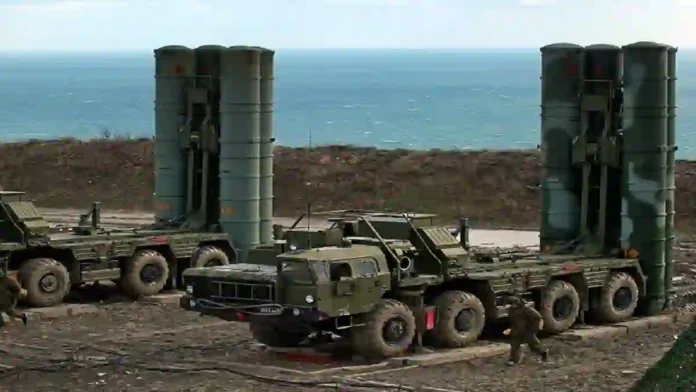Background
Russia will complete the delivery of the S-400 air defence systems to India in 2026, bringing to an end a landmark defence deal signed in 2018 worth USD 5.43 billion (approximately ₹40,000 crore). Four of the five S-400 Triumf systems have already been handed over to the Indian military, while the final delivery is scheduled for next year. The contract, despite early U.S. objections, illustrates India’s determination to secure advanced long-range air defence capabilities from Russia.
The agreement to acquire five S-400 systems was finalized on October 5, 2018, during a summit-level meeting between Prime Minister Narendra Modi and President Vladimir Putin. At the time, Washington had issued strong warnings under the Countering America’s Adversaries Through Sanctions Act (CAATSA), a law enacted in 2017 during President Donald Trump’s tenure. The legislation threatened sanctions on countries purchasing major defence platforms from Russia.
Read- Indian Army Plans Major Expansion of Vehicle-Mounted Infantry Mortar System Fleet
The U.S. has consistently objected to India’s procurement of the S-400, citing interoperability issues with Western platforms and the broader geopolitical context of isolating Russia. In March 2021, U.S. Defence Secretary Lloyd Austin reiterated the risks of sanctions to New Delhi. However, despite these warnings, Washington has refrained from invoking CAATSA against India, largely due to strategic convergence in the Indo-Pacific and India’s growing role as a counterweight to China. The delay in sanction measures has partially been because the deal has not yet been formally completed.
The S-400 systems already inducted into the Indian Air Force proved their combat value during Operation Sindoor in May 2025. Minister of State Sanjay Seth, speaking during his visit to Moscow for the V-Day Parade, highlighted their effectiveness in securing Indian airspace during the four-day conflict with Pakistan. The air defence systems reportedly played a decisive role in neutralizing incoming aerial threats during cross-border drone and missile exchanges after the Pahalgam terror attack that killed 26 civilians.
Operation Sindoor, launched on May 7 and concluded on May 10, demonstrated India’s ability to leverage high-end technology in regional conflicts. By deploying the S-400s alongside indigenous systems like Akash and advanced surface-to-surface missiles, India managed to inflict significant tactical costs on Pakistan while protecting its critical airspace and ground installations. The swift political resolution of the crisis underscored how India’s enhanced air defence capabilities acted as a deterrent.
Read- How India Could Benefit From Europe’s 6th-Gen Fighter Jet Programs For Future Air Superiority
Read- India Preparing To Conduct Crucial Test New-Generation Long-Range Subsonic Cruise Missile
Interest In Acquiring S-500
Beyond completing the current S-400 deal, India has shown interest in Russia’s next-generation S-500 Prometey air defence system. The S-500 is capable of intercepting not only modern fighter aircraft and ballistic missiles but also low-orbit satellites. If pursued, its induction would place India among a select group of nations with access to cutting-edge multi-layered missile defence capabilities, significantly upgrading its deterrence posture against regional adversaries like China and Pakistan.
Strategic Balancing And Future Outlook
The delivery of the final S-400 unit in 2026 will mark a milestone in India-Russia defence cooperation. However, it also signals the delicate balancing act India must continue to maintain between its long-standing defence partner Russia and its expanding security partnership with the United States. While Washington has been increasingly involved in joint military exercises, technology transfers, and defence co-development with India, New Delhi’s insistence on retaining strategic autonomy ensures that Russian-origin platforms will remain crucial in its arsenal for the foreseeable future.
Based On PTI Report
Agencies




